| Umělec 2007/1 >> An Attempt to Compare the Phenomena of "Tusovka" in the Russian Art of the Nineties with the Contemporary Czech Community | Просмотр всех номеров | ||||||||||||
|
|||||||||||||
An Attempt to Compare the Phenomena of "Tusovka" in the Russian Art of the Nineties with the Contemporary Czech CommunityUmělec 2007/101.01.2007 Václav Magid | en cs de |
|||||||||||||
|
The production and exhibition of the contemporary art of young people in the Czech Republic has many attributes that call attention to the artwork’s communal character. These features can be read in conjunction with the “tusovka” phenomenon associated with the Russian scene of the 1990s. Tusovka is Russian gangland slang for “assemblage,” or “gathering.” By about 1999, the concept of tusovka seemed to have run its course with the emergence of entirely different art strategies. Discussion has opened up about the possibilities for the tusovka to be transformed into entirely different appearances in artistic society. This label has come to define a new form of artistic society and communal art production. The Czech art community has apparently reached a new turning point in its existence.
TUSOVKA Viktor Misiano defined tusovka as a “form of self-organization of the art scene in the absence of involved institutions or a caring state.”1 Tusovka sprang up with the fall of old Soviet institutions and the onset of the market economy. Unlike the alternative culture of the previous era it wasn’t in opposition to the “official” culture, nor was it held together by any “common idea.” Tusovka presented a discrepant society of people primarily concerned with individual self-realization. The phenomena of tusovka thus expresses general features of Russian society in the 90s – the abandonment of any solidarity, the loss of a clear sense of self-definition, the freedom of “entry” and “exit” without any connection to the whole of society.2 The cult of personality and the resulting incapability of dialogue or partnership prevented tusovka from having any firm, clear alignment with any program. Individual artists did not share common values and did not aspire to the same goals. In this context, Russian art of the 90s can be considered as a sequence of individual careers. Czech artists in the 90s were driven by a desire to enter the international scene. Tusovka served as a temporary connection of people waiting for individual success. The psychology of tusovka could be described as pubescent frustration – a lack of self-confidence, dependence on the behavior of the rival and the pack, a need of self-confirmation from the outside. They had an ambivalent relationship with the West and its art institutions. Tusovka, on the one hand, felt eagerness and jealousy of the West, and on the other hand, was ready to be in command and was full of heroic pathos of being “appreciated” by the West, or of the “conquest” of the West.3 According to Misiano, tusovka was welded together by the hope of eventually gaining future institutional structures. It was the “type of art community that understood itself as pure potentiality.”4 At the same time it was a “serial community,” arising spontaneously during meetings and existing only as a consequence of meetings. Admission to this community was free, and there were no prerequisites for entry. The ideological and institutional background was substituted with personal authorities. Tusovka was a “personalized community.” The art and exhibition projects that arose from tusovka were not based on any articulated background of intellect or value. They tended to be fleeting and euphoric explosions reflecting the personal obsessions of the leading tusovka figures. “The function of tusovka is nothing other than the personalized production and redistribution of obsession.”5 Discussions of tusovka were overly emotionally tinged and turned inwards, impairing any self-reflection. Tusovka also endured with a limited supply of information and an underdeveloped intellectual foundation. Its thinking remained on the local level, incapable of reaching out globally. In contrast to the way art usually functions, in which the idea of an art-work is the focus of group meetings, tusovka reversed this relationship. The purpose for a meeting would be the meeting itself, and the artwork only functioned to establish a particular structure to tusovka. As Misiano says, “the most authentic art forms for tusovka are those which cultivate the substance of tusovka itself – the element of personal relationships.”6 Misiano suggested a differentiation of three basic forms of operation typical of the art of tusovka. One of them is participating in the regular sequence of events that regularly take place at a certain location. An example of this method was the gallery in the art squat on the street Trekhprudny pereulok between 1991–1993. A second is the catastrophic interventions outside the borders of tusovka. Such a case is with the provocative actions of Kulik or Brener that attracted wide public attention and expanded abroad. The third are the so called “confidential projects,” that Viktor Misiano himself organized in the mid-90s. These were projects built on a long-term intensive cooperation between curator and artists, in order to gain reflective distance and the self-consciousness about their method of work. One could say that tusovka is a thing of the past, along with the social situation from which it arose. After the wild era of market transformation, there was a period of relative stability. The institutional system of contemporary Russian art is based on long-functioning locations and organizations, not merely utopian projects. There are established commercial and non-profit galleries, medial reflection, and international art shows. Whereas in the 90s only pathological individualists could get into the scene, now even young and lesser-known artists get into large international exhibitions. Now art is in a position to address a wider community of viewers. “Unknown viewers” are now included in the audience. In this situation it is clear that tusovka must be substituted for another kind of art community. The era of temporary “gatherings” of solipsist individuals is likely leading to the “corporation.” This type of society presents itself as a conscious whole, where the artist deliberately limits their personal freedom in favor of “corporate ethics” – a complex of articulated values with which the art community identifies itself and which it presents outwardly.7 TUSOVKA AND COMMUNITY SIMILARITIES AND DIFFERENCES Some characteristics of tusovka fit very well in the community of contemporary Czech art. Just like tusovka, the Czech art community organizes itself without bigger institutional support – other than being made up of students or graduates of art schools. The most interesting and intensive places for art in Prague are the A.M. 180 gallery, ETC gallery and Entrance gallery, all of which are led by artists themselves. The CO 14 gallery, which functioned in 2002-2003, followed the exhibition concepts of the Moscow gallery at on Trekhprudny, run by Avdej Ter-Oganian, now in the Czech Republic. The Prague art community, like tusovka, does not share any ideological or aesthetic program, and is mainly connected through personal relationships. It is also a type of “serial” and “personalized” community. It exists through regular meetings at openings with plastic cups in hand. It is open to anyone who is willing to come to these events regularly. Here, the function of an institution is filled by charismatic personalities who are able to affect the community with their own bias. The characterizing of tusovka projects as “obsessive” is in perfect harmony with the practice of the Prague art community. It started with Martin Salák’s Obsese sběru exhibition (The Gathering Obsession), done in Jihlava in 2003, and has continued through last year’s exhibition by the curator Jana Kochánková at the AVU gallery that collected as many works with skull motifs as possible. The creation of art-work and organizing of exhibitions in Czech art presents a “personalized production and redistribution of an obsession.” The lack of detachment or self-reflection is a side effect of the Czech art community just like it was in the case of tusovka. Conflicts of ideology cannot be separated from personal relationships, and thinking about artistic or career goals usually does not reach past the local horizon. While seeking out more general conclusions, it is confronted by a lack of intellectual awareness and an insufficient intellectual foundation among the participants in debate. Community art lacks any printed critique. It is possible to solve all the problems within the art community, whereas informing the wider public seems to be a vain and thankless task. The only print magazine of this type was the samizdat Artur magazine that was published by Milan Salák, 2001-2002. The personality of this artist, curator, critic, and pedagogue matches the archetype of the leader of tusovka perfectly. In Prague, as with tusovka, the exhibition or work often is merely a pretext to meet with the art community. The members of the community agree to meet at an opening in a usual place and time, taking little notice of who is exhibiting. At Moscow’s Trekhprudny pereulok gallery in the beginning of the 90s, the opening seemed to just be a way for the group to spend time together. Ten years later, the Prague’s CO 14 gallery organized events based on the same principle. Ján Mančuška offered food to the guests and projected Japanese horror movies for them. Petra Pětiletá and Jana Doubková held a song and dance performance for the visitors, and the inhabitants of the surrounding building. Avdej Ter-Oganian organized a disco with his favorite music. In addition to these particular gatherings, the participation in a regular succession of events remains present in a subtler way in many of the other actions which take place in small community spaces. The Czech scene has only a few examples of the forays outside the art world that characterized tusovka. One was the action Bez názvu in 2004 where five artists defecated in the exposition at Prague’s National Gallery. This action is significant in that it wasn’t originally meant for a wide public and the information was only supposed to be passed within the community. It is also significant that one of the artists who took part in the action got the Essl prize one year later. The third defining feature of tusovka marked by Misiano is not yet found in the Czech Republic. We still have to wait for long term intense cooperation between artists and curators that would allow for a reflective detachment and ability to view the community in a wider context. The current Czech art community, though similar to the inner structure of the Moscow tusovka, contains many features that are different. In contrast to Russia, the lack of institutional support in the Czech Republic that stimulates activity from the bottom is not the result of a rapid market transformation. It is merely caused by the fact that the large state institutions are in the wrong hands. They are led by eccentrics, incompetent would-be professionals and partially transformed old-regime organizations. In the last few years Czech art institutions have improved, mainly thanks to the activities of tranzit and other individual endeavors. The development of small galleries by individual artists and the communal production of art cannot therefore be explained just as a reaction to the absence of institutions. A significant role is played by the willingness to improve these forms of life of the art community. In contrast to Russian artists of the 1990s, young Czech artists do not understand how to work communally temporarily, before their international careers get into full swing. Usually they think that art will be a way for them to spend free time rather than a way to make a living. They enjoy the creative atmosphere without hope of rising among successful artists and, at the same time, without the frustrations which are born from these hopes. At the moment one can say that the experience of communal art production in the Czech Republic has fulfilled its function. After a few years of working alone and institutionalizing from the bottom-up the community has shown self-sufficiency and productivity. A net was built that could function as a means to encourage bigger projects. The communal enterprises slowly attract the interest of institutions. The activities of CO 14 or A.M. 180 received the support of grants. Young artists leading or exhibiting in small galleries are starting to sell their works. The Display Gallery, which originated from the enthusiasm of four fresh graduates, is now a significant location working together with the Czech section of tranzit, one of the most important mediators for Czech relations with international art. The Czech art community now faces another era in its development - the era of self-awareness. The creative potential that it gathered together has the possibility to expand to a wider public. This is why it is necessary to start thinking about the “unknown” viewer and to clearly set the role up-to-date art should take. We already know the function of art in a community, now we have to decide what its function is in present-day Czech society.
01.01.2007
Рекомендуемые статьи
|
|||||||||||||
|
04.02.2020 10:17
Letošní 50. ročník Art Basel přilákal celkem 93 000 návštěvníků a sběratelů z 80 zemí světa. 290 prémiových galerií představilo umělecká díla od počátku 20. století až po současnost. Hlavní sektor přehlídky, tradičně v prvním patře výstavního prostoru, představil 232 předních galerií z celého světa nabízející umění nejvyšší kvality. Veletrh ukázal vzestupný trend prodeje prostřednictvím galerií jak soukromým sbírkám, tak i institucím. Kromě hlavního veletrhu stály za návštěvu i ty přidružené: Volta, Liste a Photo Basel, k tomu doprovodné programy a výstavy v místních institucích, které kvalitou daleko přesahují hranice města tj. Kunsthalle Basel, Kunstmuseum, Tinguely muzeum nebo Fondation Beyeler.
|















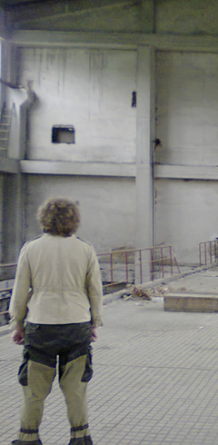






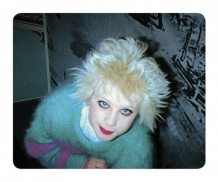




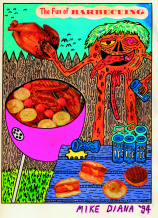
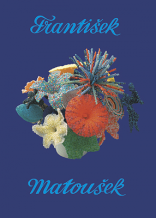
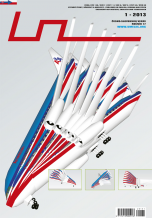
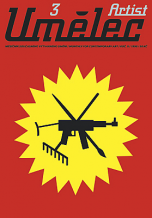


 New book by I.M.Jirous in English at our online bookshop.
New book by I.M.Jirous in English at our online bookshop.
Комментарии
Статья не была прокомментированаДобавить новый комментарий